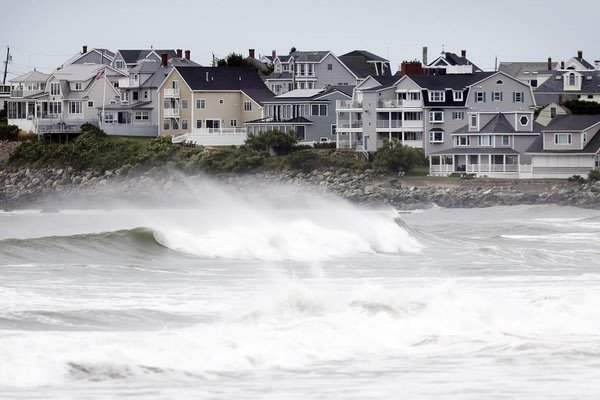Atlantic Storm Lee made a dramatic entry, bringing with it high winds, rough surf, torrential rains, and widespread chaos as it pummeled New England and Nova Scotia before making its final landfall in Canada’s Nova Scotia on a late Saturday afternoon. The storm left a trail of destruction, including power outages, flash flooding, and even a tragic loss of life.
Widespread Impact in the United States:
In the United States, Atlantic Storm Lee affected a substantial stretch from Portsmouth, New Hampshire, to the eastern end of Maine. This included popular tourist destinations like Bar Harbor, the gateway to Acadia National Park, where a whale watch vessel broke free of its mooring and crashed ashore in front of the College of the Atlantic.
The storm’s impact was far-reaching, with reports of flooded roads, downed power lines, and toppled trees across the region. The ferocity of Lee disrupted ferry services and compounded the challenges in an area that had already faced wildfires and severe flooding earlier in the year.
Tragic Fatality and Power Outages:
Tragedy struck as a 51-year-old motorist in Searsport, Maine, lost his life when a large tree limb fell on his vehicle during a period of high winds. The tree limb brought down live power lines, necessitating the cutting of power before the man could be removed. Despite efforts, the man succumbed to his injuries at a hospital.
Power outages were another significant consequence of the storm. At its peak, 11% of electricity customers in Maine were without power. In Nova Scotia, 27% experienced power outages, while New Brunswick and Prince Island reported 8% and 3% outages, respectively.
Flash Flooding and Damage:
Flash flooding added to the woes of residents in Massachusetts, with fast-flowing waters washing out roads, causing sinkholes, damaging homes, and flooding vehicles. The situation was exacerbated by severe waterlogging in certain areas.
Destructive hurricanes are relatively rare in this northern region. The Great New England Hurricane of 1938, for instance, brought gusts as high as 186 mph (300 kph) and sustained winds of 121 mph (195 kph) at Massachusetts’ Blue Hill Observatory. However, recent years have not seen storms of such intensity.
Despite the challenging conditions, utility workers braved the elements to make repairs, and forewarned residents were urged to stay home. Nevertheless, some ventured out on the roads, demonstrating the resilience of the affected communities in the face of adversity.
Atlantic Storm Lee’s rampage serves as a stark reminder of the power of nature and the need for preparedness and resilience in the face of severe weather events.
